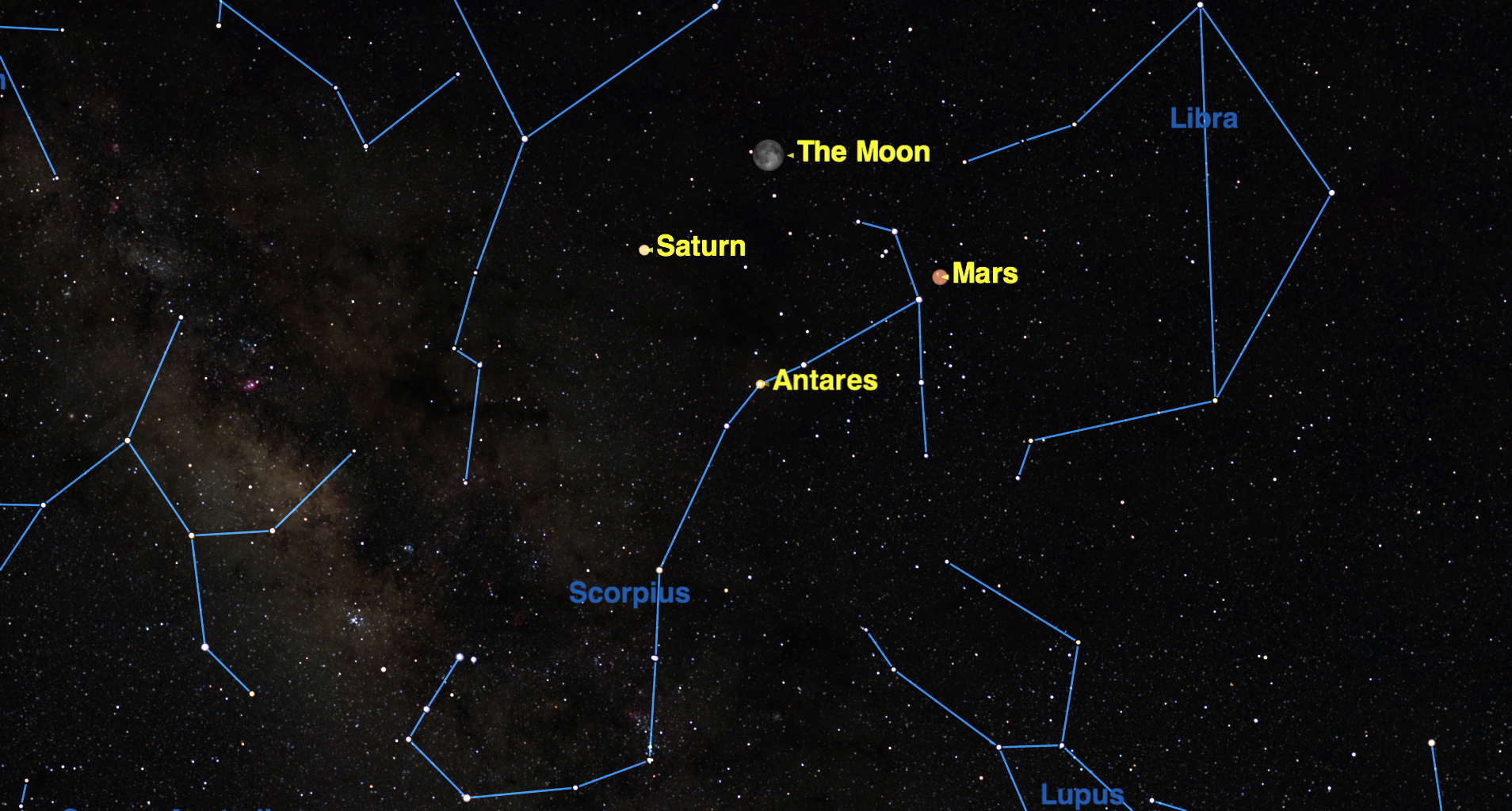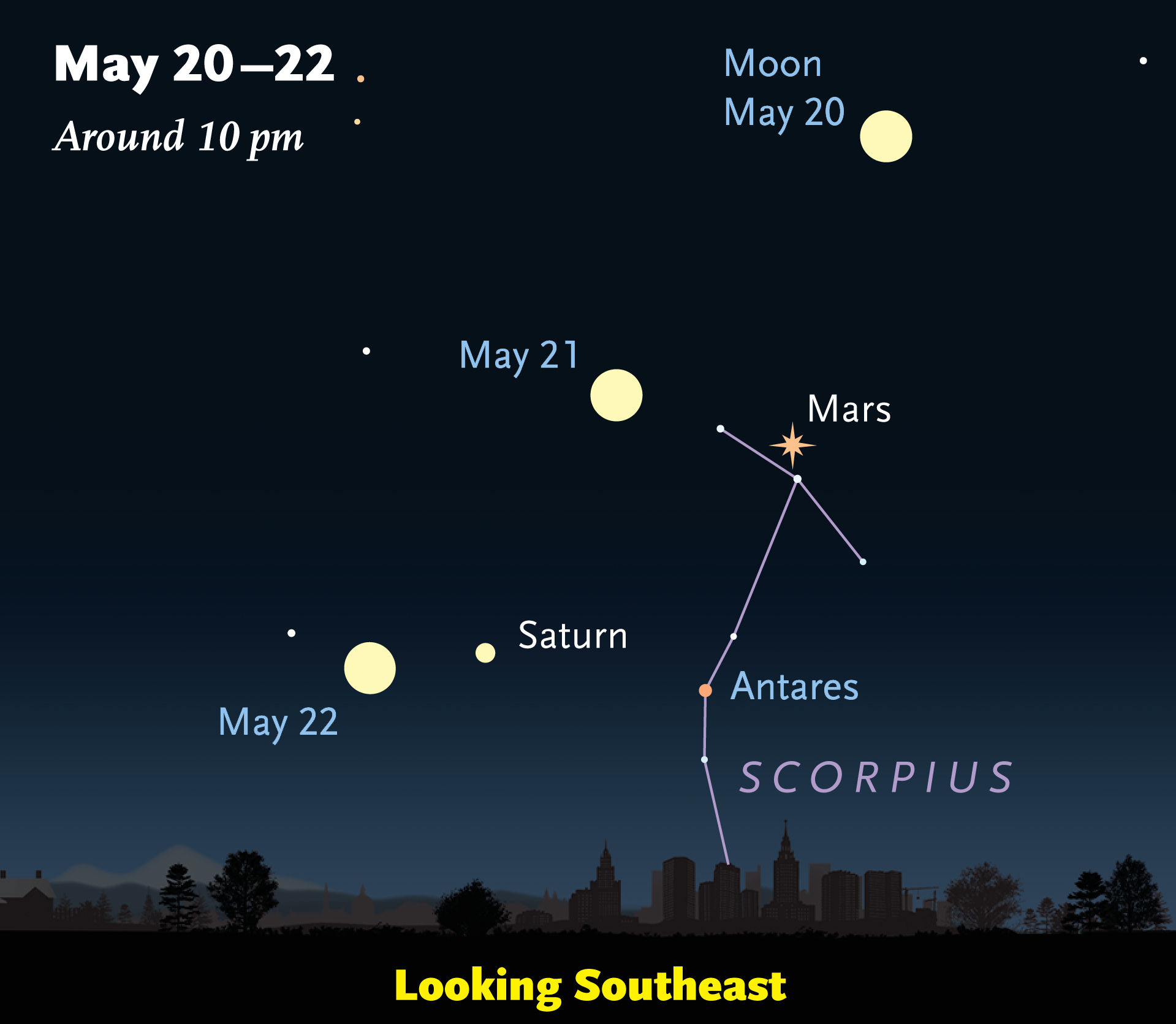Mars at Opposition: See the Red Planet with Your Own Eyes This Weekend

This Sunday morning (May 22), Mars reaches opposition with the sun. This means that the Red Planet will be exactly opposite the sun in Earth's sky, making this weekend a great time to see it for yourself. In fact, Mars will soon be at its closest point to Earth in over a decade.
Because Mars is directly opposite the sun (in relation to Earth) during opposition, Mars rises as the sun sets, and sets as the sun rises. This also means that Mars is visible all night long this weekend. To mark the occasion, NASA scientists used the Hubble Space Telescope to capture an absolutely stunning view of Mars as it nears opposition.
The exact time when Mars will be above the horizon depends on your location. For example, in New York, Mars rises in the East at 8:10 p.m. EDT and sets in the West at 5:35 a.m. EDT, so it is above the horizon for 9 hours and 25 minutes. Farther south, it will be visible longer, and farther north, for a shorter time. [Video: Mars: Hubble Telescope's Eye on the Red Planet]
The easiest way to spot Mars this weekend is to go out when the Red Planet is highest in the sky, close to midnight local time. Remember that if you live in a part of the world that is on daylight saving time, that "sweet spot" of viewing times will be close to 1 a.m. your local time.
If you live anywhere north of the equator, Mars will be due south at midnight local time. If you live south of the equator, Mars will be high overhead. On opposition night, Mars will be close to the nearly full moon, and will be the brightest object in the sky, except for the moon and Jupiter, over near the western horizon. Look for Saturn and the bright-red star Antares nearby.

What Mars looks like
The most striking thing about Mars' appearance to the naked eye is its red color. This will be particularly clear if you compare it with Jupiter over in the west. They are almost equal in brightness, but Jupiter is a pale cream color, whereas Mars is noticeably red.
If you view Mars through a telescope, you are likely to be disappointed. All of the planets are much smaller than people expect, and this is particularly so with Mars, because it is one of the smallest planets in the solar system; only Mercury is smaller.
Get the Space.com Newsletter
Breaking space news, the latest updates on rocket launches, skywatching events and more!
You may have heard an internet rumor that, on a particular date, Mars will appear as large as the moon. This is physically impossible, because Mars is always much farther away than the moon, and never appears larger than 1/70 of the diameter of the moon. On opposition night, Mars will be only 1/100 of the diameter of the moon. In other words, it will take a telescope magnifying 100 times to make Mars look as big as the moon as seen with the naked eye.
It takes a trained eye to see detail on a disk that small. Experienced planetary observers spend years sketching Mars at every opportunity, trying to catch the rare instants when Earth's atmosphere steadies enough to reveal Mars' secretive details. It takes patience and an optically excellent telescope.
Usually, Mars observers first look for the planet's polar ice caps. However, this year, Mars is close to its equinox, so both polar caps are at their smallest, and thus hard to see. What may be visible is the pale haze that forms over the polar regions.
It is usually possible to see so-called albedo markings, variations of dark and light caused by the alternation of bedrock and desert sands. The darker areas appear grey-green, while the lighter areas are a pale peach color. The contrast between light and dark is very low but may be enhanced by using a red or orange filter.
See Mars at its closest since 2005
Oddly enough, although Mars is directly opposite Earth on Sunday morning, it is not at its closest.
Because of Mars' eccentric orbit, it will still be getting closer to Earth on opposition night, and won't reach its minimum distance (and largest size) until almost a week later, on May 30 at 6 p.m. EDT (2200 GMT). The difference is only 5 percent, which is too little to make much difference.
On May 30, Mars will be the closest it has been to Earth since November 2005, giving us the best view we have had in over a decade. Don't miss it.
Editor's note: If you snap an amazing photo of Mars at opposition and would like to share it with Space.com and our news partners for a possible story or image gallery, send images and comments to managing editor Tariq Malik at spacephotos@space.com.
This article was provided by Simulation Curriculum, the leader in space science curriculum solutions and the makers of Starry Night and SkySafari. Follow Starry Night on Twitter @StarryNightEdu. Follow us @Spacedotcom, Facebook and Google+. Original article on Space.com.

Join our Space Forums to keep talking space on the latest missions, night sky and more! And if you have a news tip, correction or comment, let us know at: community@space.com.

Geoff Gaherty was Space.com's Night Sky columnist and in partnership with Starry Night software and a dedicated amateur astronomer who sought to share the wonders of the night sky with the world. Based in Canada, Geoff studied mathematics and physics at McGill University and earned a Ph.D. in anthropology from the University of Toronto, all while pursuing a passion for the night sky and serving as an astronomy communicator. He credited a partial solar eclipse observed in 1946 (at age 5) and his 1957 sighting of the Comet Arend-Roland as a teenager for sparking his interest in amateur astronomy. In 2008, Geoff won the Chant Medal from the Royal Astronomical Society of Canada, an award given to a Canadian amateur astronomer in recognition of their lifetime achievements. Sadly, Geoff passed away July 7, 2016 due to complications from a kidney transplant, but his legacy continues at Starry Night.










